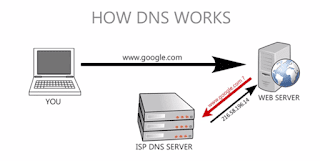LO1 - Understand how organisations use business information
1.1 Types of Information
4 types of information: -
Qualitative
- Description
- Description about the colors, textures, smells, taste and appearances.
Quantitative
- Numbers
- Numerical information
- Length, height, weight, speed, time, cost and ages.
Primary
- Data that you collected yourself
- Real-time data
-Sure about sources of data
- Costly and time-consuming process
- More flexible
- Direct observation
- Surveys
- Interviews
Secondary
- Data that you collected from external resources
- Past data
- Not sure about sources of data
- Cheap and not time-consuming
- Less flexible
- The Internet
- Televisions
- Stories told verbally
1.2 Purpose of Information
Operational Support
- System
- Data input is done by the end user
- Processed to generate information products
- User - Input data - System process - Output information
- Monitoring and controlling its activities
- A business can make immediate use of the information
- Example of operational support - Point-Of-Sale (POS)
Analysis
- Progress
- Checking the information from past or present information to check whether they are going up (increase) or going down (decrease).
- To identify patterns or trends and to monitor the business.
- Example of analysis - Student academic performance / bank
Decision-Making
- Process of deciding something
- To resolve any issues that may arise in business.
Operational
- For one branch only
Tactical
- For group of branches
Strategic
- For a region or nationally
Gaining Advantage
Opposite to resolving a problem
Taking advantage of external or internal events.
Making decisions to benefit for ourselves.
1.3 Sources of Information
Information comes from a variety of sources, formal and informal.
Formal Sources
Information can come from within or inside the organisation.
Internal
Within a business each department produces information which is of value to other departments.
- Administrative Department
- Finance Department
- Manufacturing Department
- Marketing Department
- Human Resource Department
- Purchasing Department
Information can come from outside the organisation
- Government
- Research consultants
- Commercial
Reliability of Data Sources
Primary information is more reliable.
Internal information is more reliable.
Informal Sources
Conversation with colleagues at lunch or from friends or other associates external to your company.
1.4 Good Information
Using information for business purposes and storing information in an information system.
Helps you to make the right business decision.
Characteristics of a good information: -
Valid
Definition: The information which can be trusted and dependable.
Example: Daily news such newspaper, news TV and online news.
Timely
Example: Daily news such newspaper, news TV and online news.
Timely
Definition: The information that is available in the current time and up-to-date.
Example: The number of world populations in October 2018.
Fit-for-purpose
Example: The number of world populations in October 2018.
Fit-for-purpose
Definition: The information that is provided has a good value or benefits for the purposes.
Example: Health program.
Sufficiently accurate
Example: Health program.
Sufficiently accurate
Definition: The information is appropriate or compatible for the purpose.
Example: Class rules.
Right level of detail
Example: Class rules.
Right level of detail
Definition: The information that is provided are fully detailed.
Example: Birthday invitation card.
From a source in which the user has confidence
Example: Birthday invitation card.
From a source in which the user has confidence
Definition: The source of the information can be trusted by the user.
Example: Real owner's company website.
Understandable by the user
Example: Real owner's company website.
Understandable by the user
Definition: The information is easy to be understood by the user.
Example: Omelette recipe.
https://prezi.com/zdm57e9k-cy7/valid-information/
Example: Omelette recipe.
https://prezi.com/zdm57e9k-cy7/valid-information/
1.5 Business Functional Areas
- Sales Department
- Purchasing Department
- Manufacturing Department
- Marketing Department
- Finance Department
- HR Department
- Admin Department
1.6 Information Flows
- The movement of information relevant to the business from where it is produced to where it can be used.
For any organisation -Speedy and efficient information flow is very important to its success
2 types:-
Internal
inside the organisation
represented as rectangles
External
outside the organisation or other from the organisation














Comments
Post a Comment